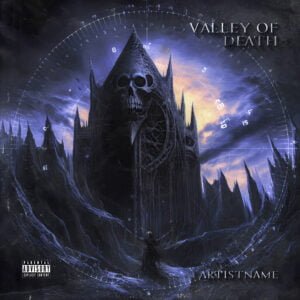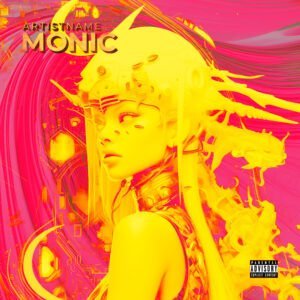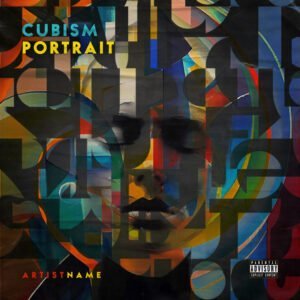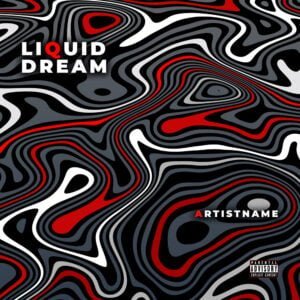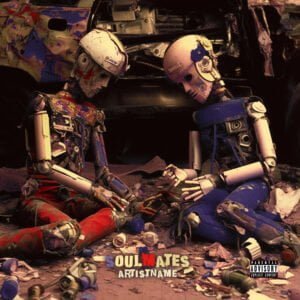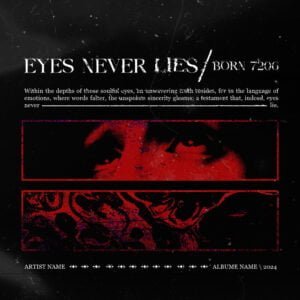Artworks are sold exclusively only once, on first-come first-served basis.
Premade Industrial Album Cover Art Designs
Showing 1–12 of 145 results
$ 99 Original price was: $ 99.$ 80Current price is: $ 80.
$ 140 Original price was: $ 140.$ 99Current price is: $ 99.
$ 99 Original price was: $ 99.$ 79Current price is: $ 79.
$ 120 Original price was: $ 120.$ 99Current price is: $ 99.
$ 100 Original price was: $ 100.$ 80Current price is: $ 80.
Download exclusive premade industrial music album cover designs and digital artworks for sale created by artists, for artists.
Can’t discover your artwork? We’ve got you covered! Buy cover artwork's job is to curate a collection of unique exclusive licenses download premade artworks for sale, also provide design services for artists, musicians, bands, singers, vocalists, DJs, producers, record labels, authors, content creators, distributors, and publishers with the collaboration of top artists, designers, and makers that would elevate music into visual imagery.
Covering every genre, from Gothic Rock, EBM, and Noise Music, to Futurepop. Grab your favorite Artworks (illustrations, images, photos, collages, and graphic arts) and use them for Albums, Singles, EPs, Posters, Merchandise and more on Distrokid, Spotify, Apple Music, Bandcamp, Soundcloud, Tidal, Deezer, and other Streaming, Publishing, and Printing Services. You also can turn them into a short looping animation and use it for streaming services like Spotify videos or YouTube and other social media like Instagram stories or TikTok.
Artworks are sold exclusively only once, on first-come first-served basis.
A Dive Into Industrial Music
Industrial is a genre in between Rock and Electronic music. It evolved out of the German post-war underground scene in the seventies, and has been experimental and obscure ever since. Gothic music, following out of “Post-Punk Depression”, shares many characteristics with Industrial and both subcultures have become intertwined into a state of Siamese twins. Author John Savage outlines five different aspects of Industrial music that show a great deal of insight into this rather secluded genre: organizational autonomy, access to info, use of synth and anti-music, extra-musical elements, and shock tactics.
The first one - organizational autonomy - can be traced back to the roots of the genre’s name: Industrial comes from Industrial Records, the first Industrial record company and more an extreme experiment than a real enterprise. The name however is no coincidence: early Industrial criticizes contemporary art by going either backwards (dark retro/industrial age) or forwards (dark cyber/futurism). Musical references to factory and industrial life (noise, machines) strengthen Industrial’s name. Industrial however does not follow any rules but likes to create the illusion of a heavily organized machine, with visual references to totalitarian regimes such as strong logos, artwork in black-red-white, and band names that are conceived as unstoppable movements on their own. Special fashion subcultures that combine “industrial” looks with either futuristic or retro aesthetics such as “Steampunk” or “Cyberpunk”, enrich modern Industrial subculture, and are sometimes mistaken for music genres.
Industrial is also keen on introducing synth and anti-music (read: noise) into its songs to create the atmosphere of retro-futurism or even more appropriately “techno-paranoia”, reminiscent of American novelist William S. Burroughs. The song structure of Rock gets combined with the sound effects and instrumentation of electronic music, specifically Downtempo, Techno, and Trance. Industrial has a slower, hypnotizing tempo compared to Rock and a pronounced, perfectly regular (almost in a military fashion) rhythm that pounds throughout most Industrial tracks. This has led to the implementation of the word “Techno” on many Industrial genres, such as “Technoid”, “Dark Techno”, “Cybertechno”, and so on. But Industrial is nothing like Techno: there is no groove or soul within, only a dark, pulsing force that is torn and tortured by its own resourceful consciousness.
The forth aspect of Industrial, extra-musical elements, concerns visual art and fashion, but most importantly performance art. Industrial culture is known for its extravagant music concerts. The earliest music shows in the seventies already explored the outer limits of what is morally acceptable on stage and then leapt far and wide over these limits. Not only on stage but also in cover art and lyrics, shock tactics are being used by Industrial: references to fascism and Nazism, torture, self-mutilation, deviant sex, and psychotic, disturbing imagery or voices, all intensified by the dark and heavy sound of Electronic Rock. But Industrial is anything but fascist; the music holds a mirror to those who wrongfully believe so and teaches how people are easily manipulated by media and the visual. Industrial is a philosophical meta-genre, which is why it values access to info.
Industrial has always believed that music is unable to change the world. Yet it tries nevertheless, resulting in a schizophrenic identity of aggression/noise versus melancholy/depression. This ironic paradox explains many of its characteristics and why few understand and appreciate the music. But more remarkably, is what makes Industrial unique among super-genres: the fact that it has managed to survive all this time while staying practically completely underground (the odd Industrial Rock superstars excluded). The reason is a steel subculture: strong and durable and more important than a technical common ground. Indeed, when one listens to Noise Music or Early Industrial and compares this to Futurepop, the difference can hardly be larger. But as long as there is something repulsive about contemporary society, Industrial, regardless of style, has a reason to exist.







